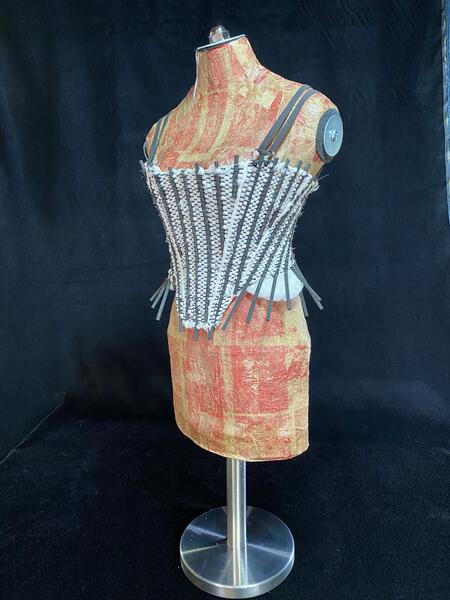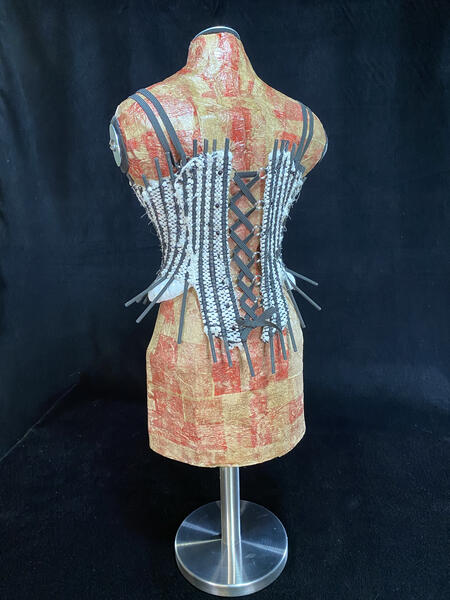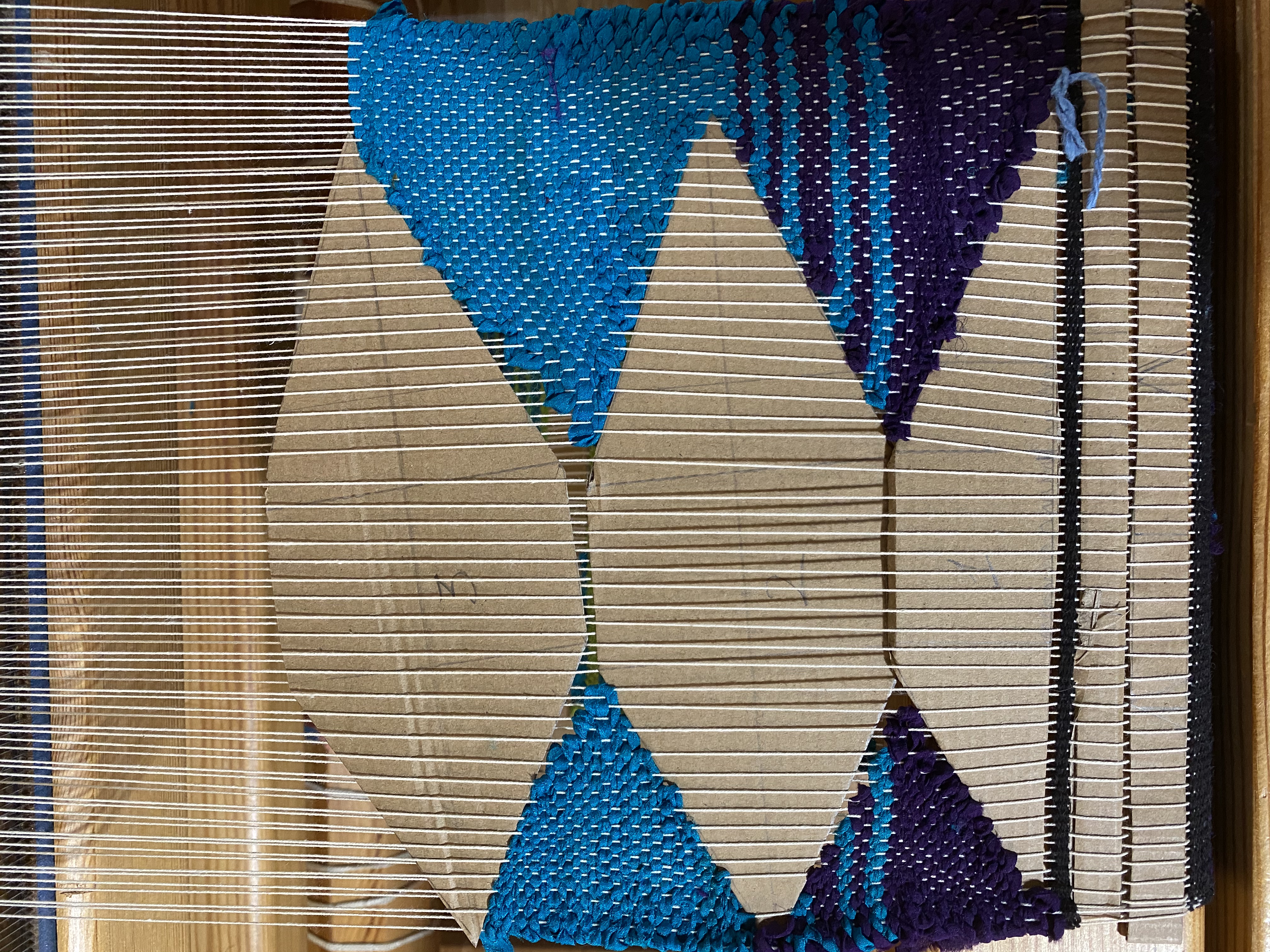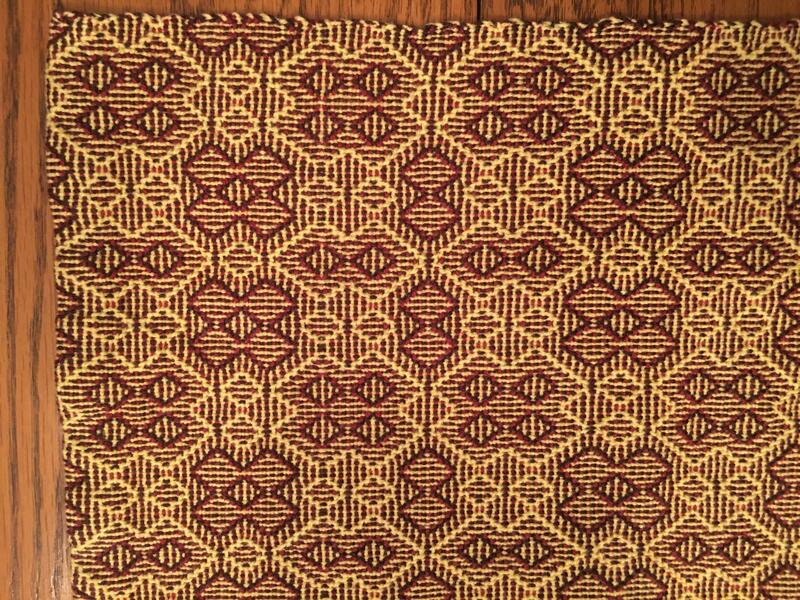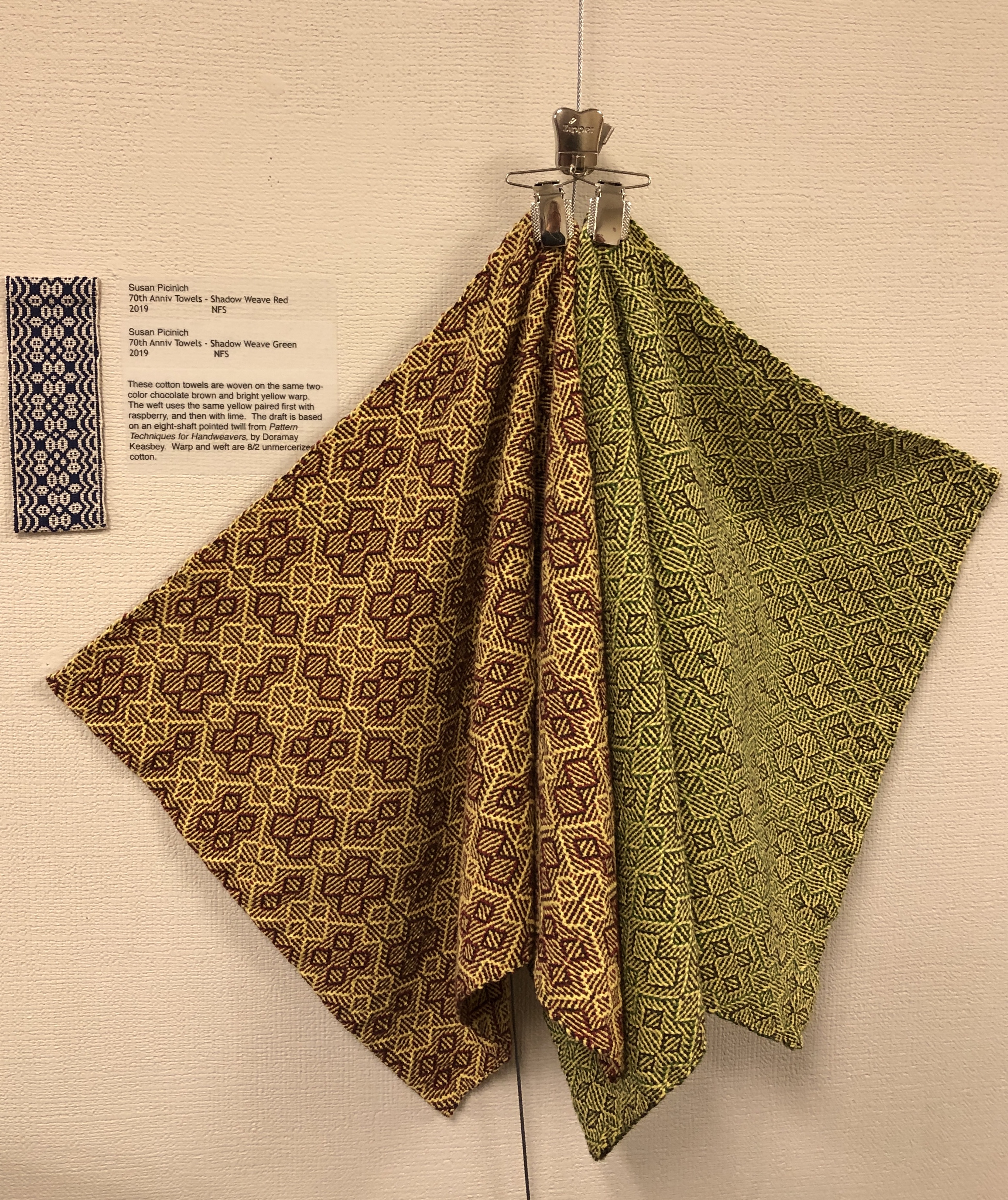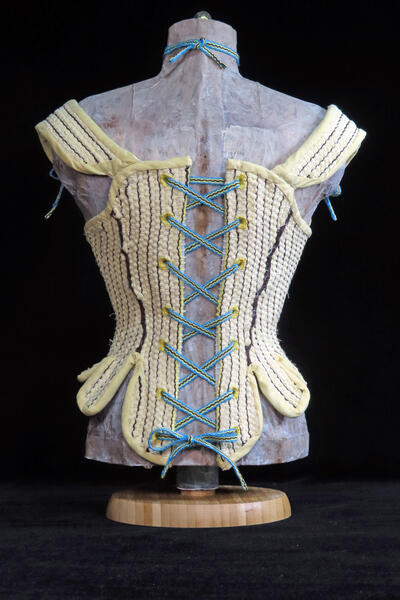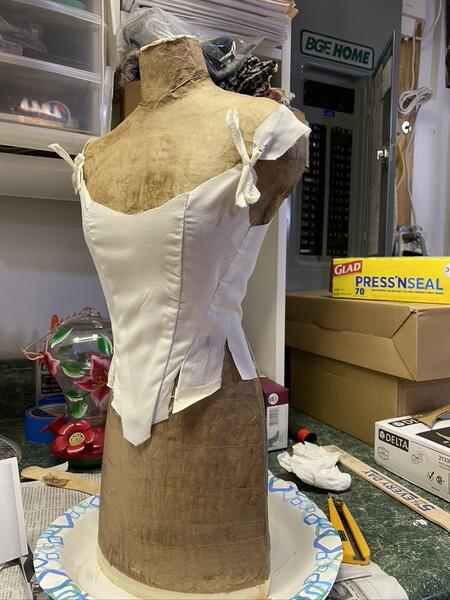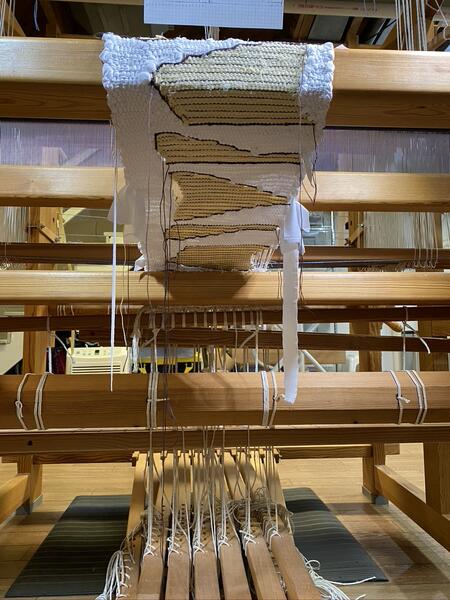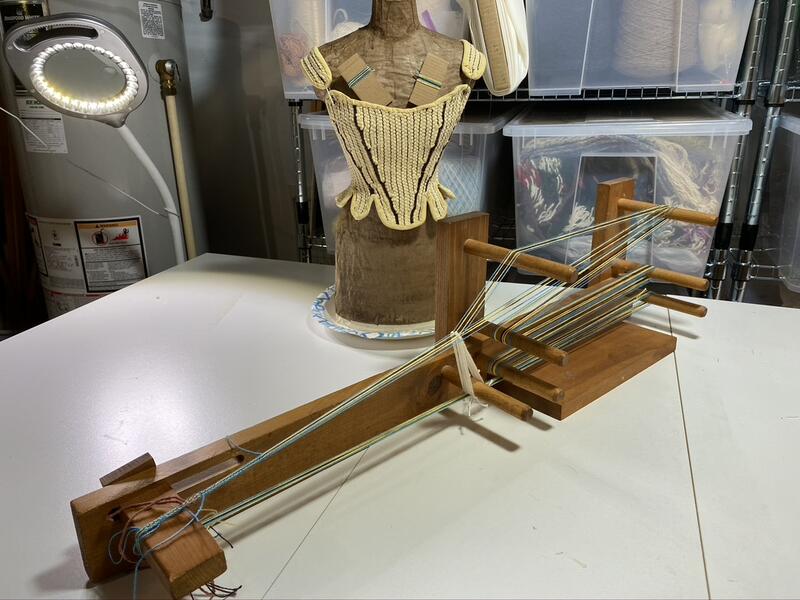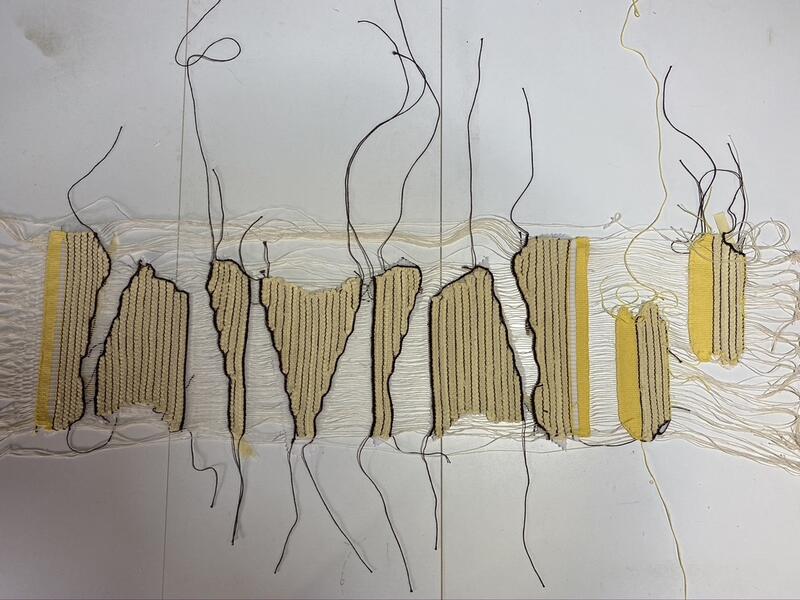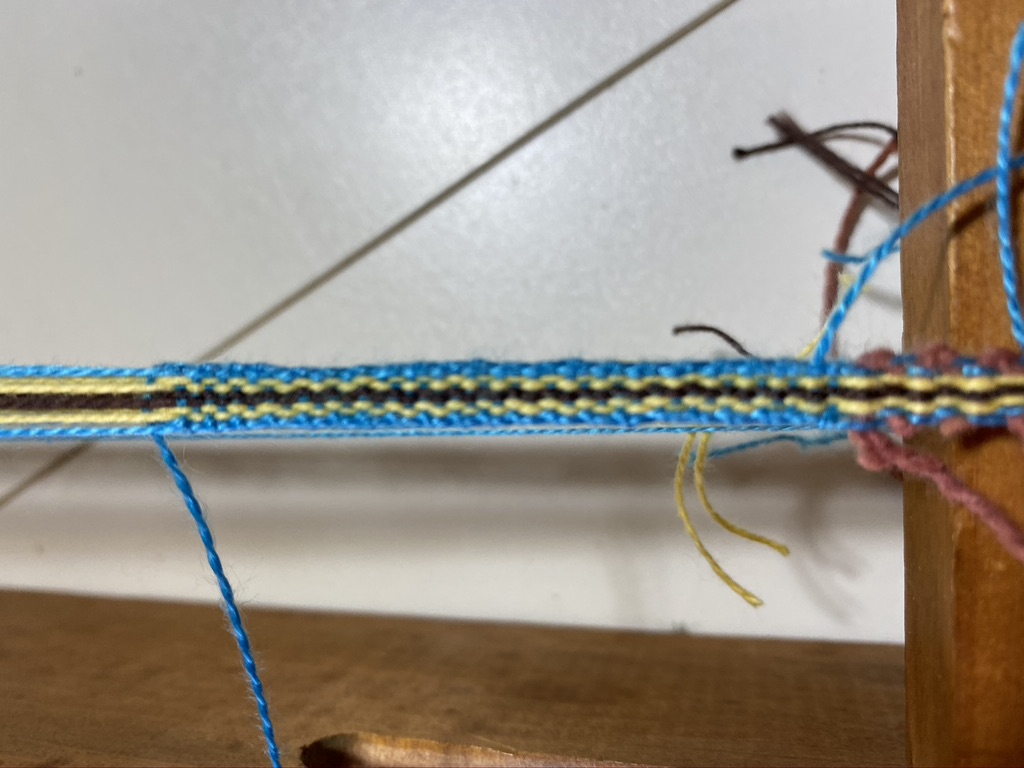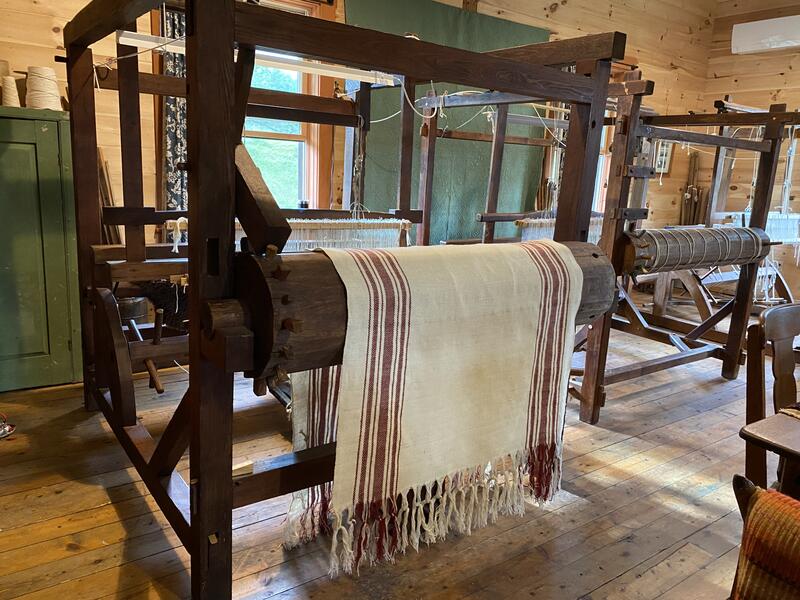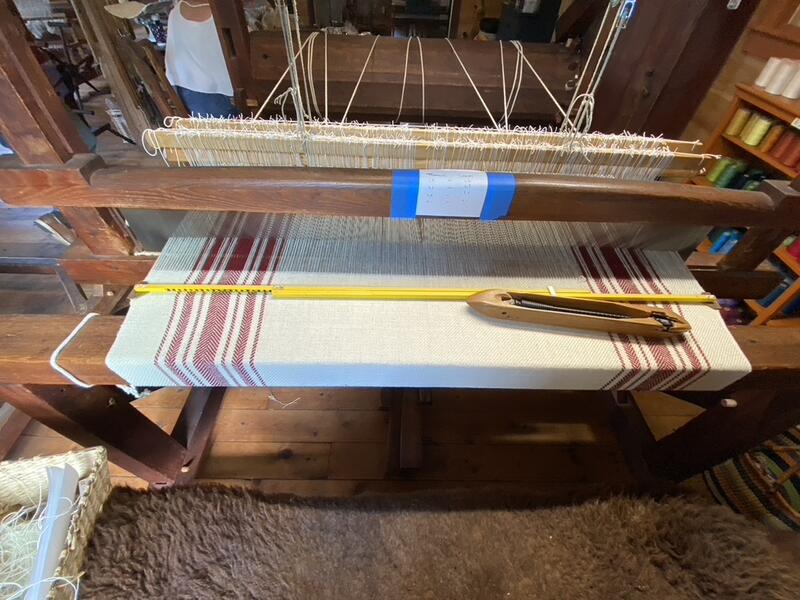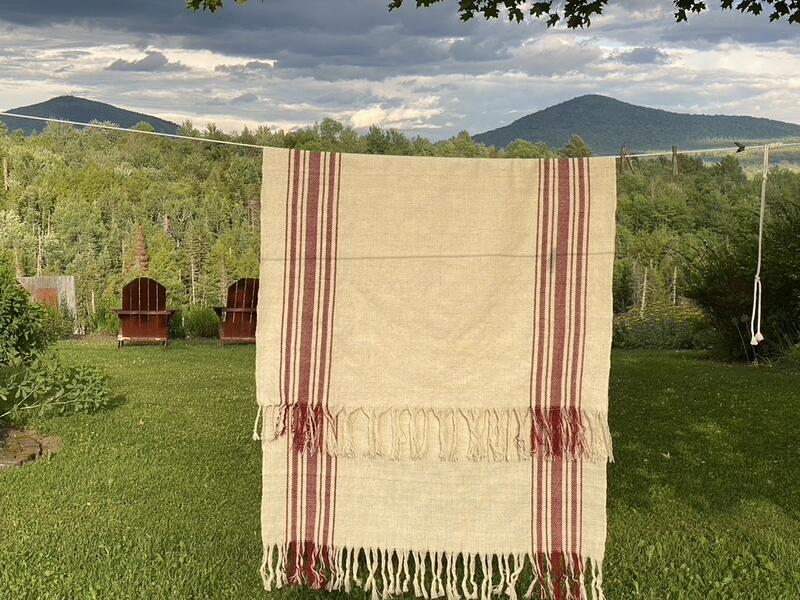Work samples
-
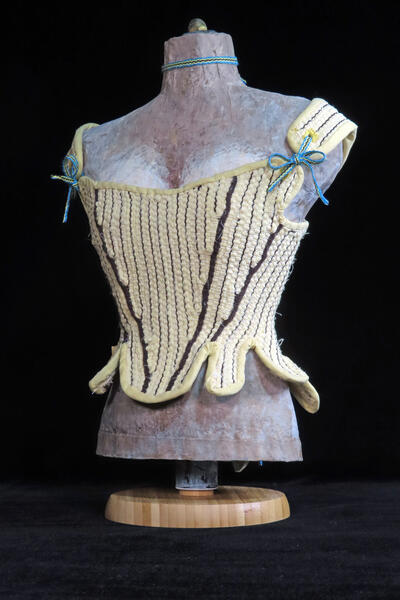 Pulled Warp CorsetThis pulled-warp corset is a miniature fantasy bodice for an escape to a storybook world. This half-scale garment is woven flat on a floor loom using cotton rags and yarn in plain weave. The corset is shaped off the loom by a pulled-warp technique. The lacing is an inkle band in cotton and Tencel. Maybe this is what Cinderella would have made for herself from left-over fabric scraps. Making costumes and playing dress up allows the imagination free rein. (2021)
Pulled Warp CorsetThis pulled-warp corset is a miniature fantasy bodice for an escape to a storybook world. This half-scale garment is woven flat on a floor loom using cotton rags and yarn in plain weave. The corset is shaped off the loom by a pulled-warp technique. The lacing is an inkle band in cotton and Tencel. Maybe this is what Cinderella would have made for herself from left-over fabric scraps. Making costumes and playing dress up allows the imagination free rein. (2021)
About Susan
Susan Picinich is a Professor of Theatre at Towson University teaching costume design and costume history. She served as dean of Towson’s College of Fine Arts and Communication for eight years, following twenty-four years as a professor and administrator at the University of Southern Maine. Susan is also a past board member of the Baltimore County Arts Guild, Portland Stage Company, and Maine State Music Theatre. Her creative work is in fiber arts and theatrical costume design. Susan has… more
Cuban Coffee Pot
When visiting the Museo Nacional de Bellas Artes in Havana, I saw Roberto Fabelo’s installation entitled “Cathedral” made of aluminum coffee pots, and in Trinidad, Cuba, I saw a local artist’s anthropomorphized coffee-pot sculptures “Los Conspiradores.” These inspired me to weave a coffee pot, which as a symbol of domesticity and hospitality exemplifies a bridge between people. (2020)
-
 Cuban Coffee PotLoom-woven pulled warp, cotton seine twine and silk rags, papier mâché armature. 9.5” x 7” x 5”.
Cuban Coffee PotLoom-woven pulled warp, cotton seine twine and silk rags, papier mâché armature. 9.5” x 7” x 5”. -
Cuban Coffee Pot detailDetail with open lid. Loom-woven pulled warp, cotton seine twine and silk rags, papier mâché armature. 9.5” x 7” x 5”.
-
 On the loomWeaving the coffee pot with voided sections to allow for pulled warp
On the loomWeaving the coffee pot with voided sections to allow for pulled warp -
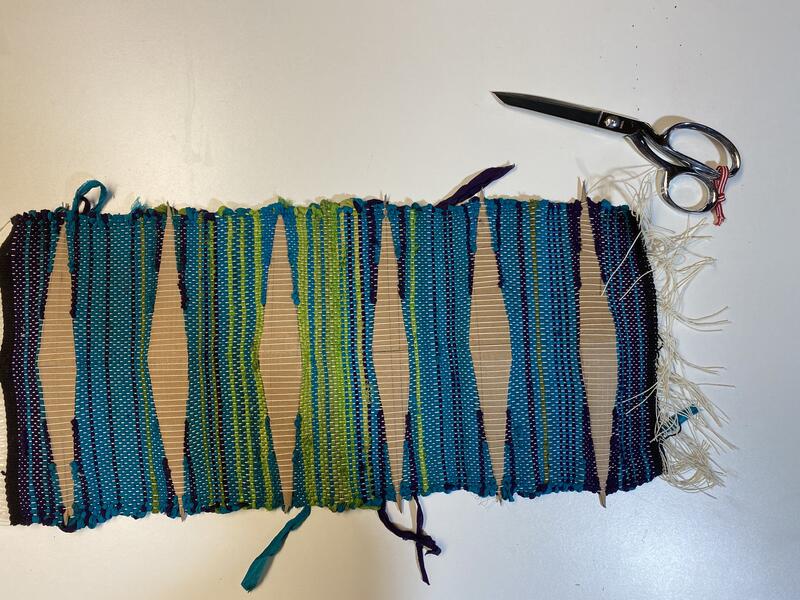 Ready to pull the warpOff the loom and ready to pull the warp to make a three dimensional vessel.
Ready to pull the warpOff the loom and ready to pull the warp to make a three dimensional vessel.
Shadow Weave Towels
Corset Process
Handwoven and Handsewn 1830s Chemise and Petticoat
These two garments are inspired by the chapter on clothing in the book Keep Me Warm One Night: Early Handweaving in Eastern Canada by Burnham and Burnham. This book, published in 1972 in conjunction with an exhibit of the same name at the Royal Ontario Museum in Toronto, is a touchstone for many hand weavers and a treasured inspiration to me.
The chemise is made of fine linen yard in plain weave (tabby). I wove the fabric and made the chemise pattern based on study and measurement of the chemise pictured in the book (fig. 80) and viewed in person at the Royal Ontario Museum. The petticoat is made of my handwoven cotton fabric reproducing a piece in the (fig. 79) and studied in person at the museum. The pattern dimensions and construction details of the petticoat were culled from multiple sources including The Workwoman’s Guide from 1838, a woolen petticoat also pictured in Keep Me Warm One Night, a petticoat studied at the Costume Institute of the Metropolitan Museum of Art, and petticoats at Genesee Country Village and Museum in Mumford, NY.”
My purpose in making these reproductions is to learn all I can about the fabric, the garments, and those who made each item.
-
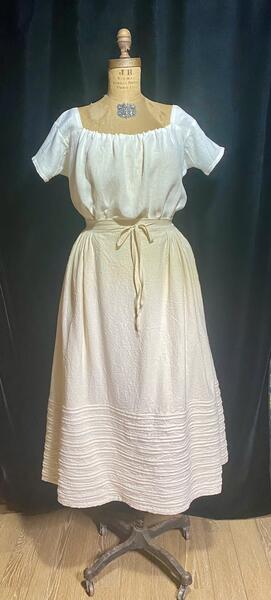 Chemise and Petticoat
Chemise and PetticoatHandwoven and hand sewn 1830s linen chemise and cotton, corded petticoat on a mannequin
-
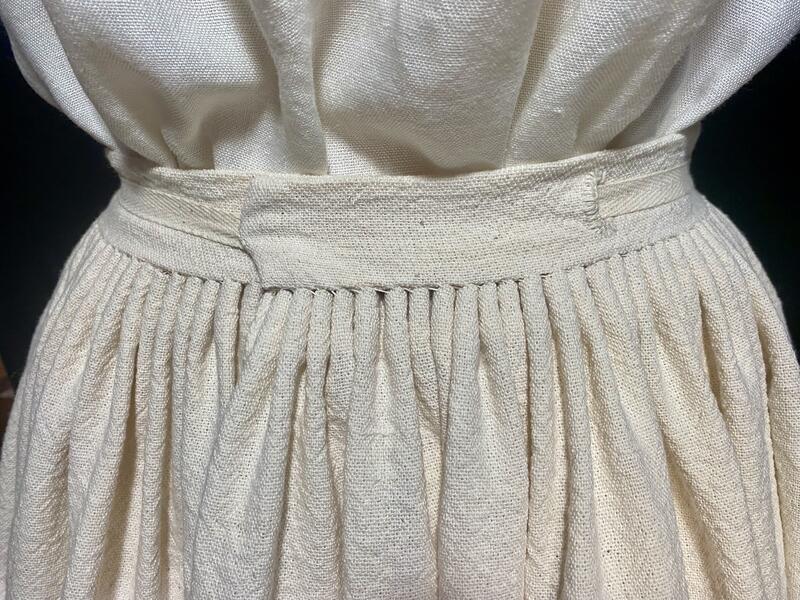 Chemise and Petticoat detail
Chemise and Petticoat detailDetail of the back waistband and cartridge pleating of the petticoat into the waistband.
-
 Chemise Sleeve and Shoulder detail
Chemise Sleeve and Shoulder detailChemise sleeve and shoulder detail showing hand sewn seams and a closeup view of the handwoven linen fabric.

